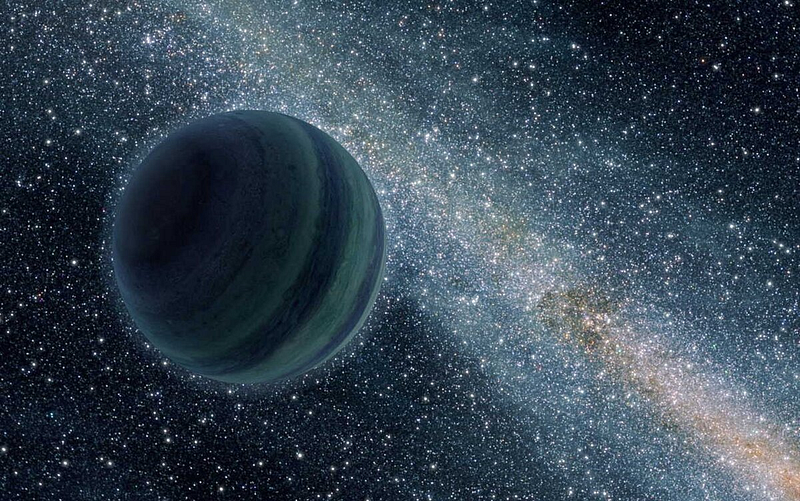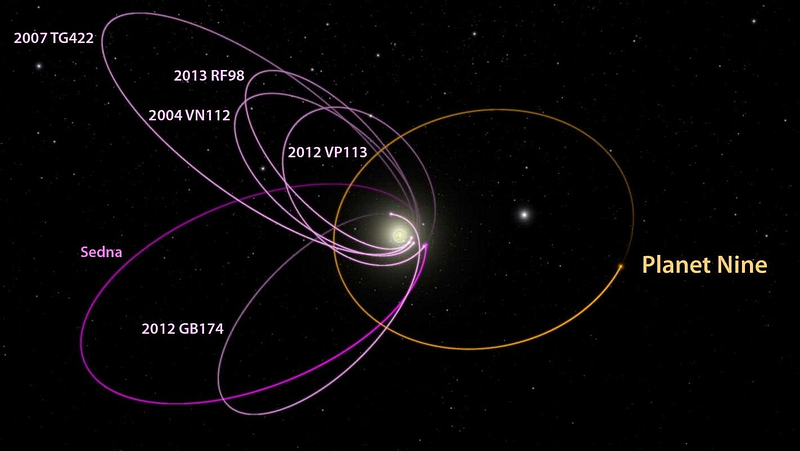Exploring the Potential Existence of a Ninth Planet
Written on
Chapter 1: The Search for the Ninth Planet
For decades, Pluto was recognized as the Ninth Planet after its discovery in 1930. However, in 2006, astronomers reclassified it, along with other similar celestial bodies beyond its orbit, as "dwarf planets." Recently, discussions have revived regarding the existence of a Ninth Planet. Is there an undiscovered object at the outskirts of our Solar System that fits this description? Let's explore this intriguing possibility together.

The Dilemma of Dwarf Planets
In-depth studies of dwarf planet orbits have revealed irregularities in their movements. For instance, Sedna's orbit is unusually elongated, taking about 11,000 years to complete a single revolution around the Sun. This abnormal trajectory suggests that an unseen force may be influencing Sedna and other nearby dwarf planets. Mathematically, the chance of all six observed objects exhibiting such a displacement in the same direction is a mere 0.007%, hinting at a possible hidden object exerting gravitational pull on them.
In 2016, based on these findings, astronomers proposed the existence of a massive planet located far beyond Pluto, estimated to be five to ten times the size of Earth. As research continues, the number of celestial bodies demonstrating similar orbital anomalies as Sedna has risen to 19, and this figure is expected to increase substantially.

Notably, Neptune's discovery was similarly prompted by the analysis of Uranus' orbital irregularities, where the gravitational influence of Neptune was detectable. Scientists hope to apply the same principles to identify the elusive Ninth Planet.
The Hypothetical Ninth Planet
Though the Ninth Planet remains a theoretical construct, researchers have been able to simulate its orbit and hypothesize its internal structure. Preliminary models suggest it would have a highly elongated orbit, with its farthest point from the Sun (aphelion) ranging between 90 to 180 billion kilometers and its closest point (perihelion) at around 30 billion kilometers. Its orbital cycle around the Sun is estimated to take between 10,000 and 20,000 years. Researchers also theorize that this planet might possess a solid core enveloped in ice, akin to Uranus and Neptune.
Astronomers are keen to understand how such a massive planet could exist at the Solar System's edge. Several theories have emerged. One posits that the Ninth Planet originally formed closer to the Sun but was subsequently pushed outward due to the gravitational pull of larger planets, with its orbit becoming increasingly elongated as stars passed nearby.

Another theory proposes that the planet formed in its current location. This idea is contentious, as it raises questions about whether the protostellar disk extended to that region during the formation of the Solar System, and if so, whether there was sufficient material to create such a large body.
Alternatively, it’s possible that the Ninth Planet did not originate in our Solar System but was instead captured by the Sun's gravity. Some scientists even suggest that it may not be a planet at all, but rather a large conglomerate of various objects bound by a shared gravitational field.
If you're interested in more articles about space, give us a clap! Subscribe to our channel and feel free to ask questions, which I will address in future articles.
Chapter 2: Evidence Supporting the Existence of a Ninth Planet
The first video titled "Is There A HIDDEN Massive PLANET in Our Solar System?" explores the possibility of an undiscovered massive planet influencing the orbits of distant objects in our Solar System.
The second video, "Evidence of New Planet in the Solar System Found," discusses recent findings that may point to the existence of a new celestial body lurking in the outer reaches of our Solar System.